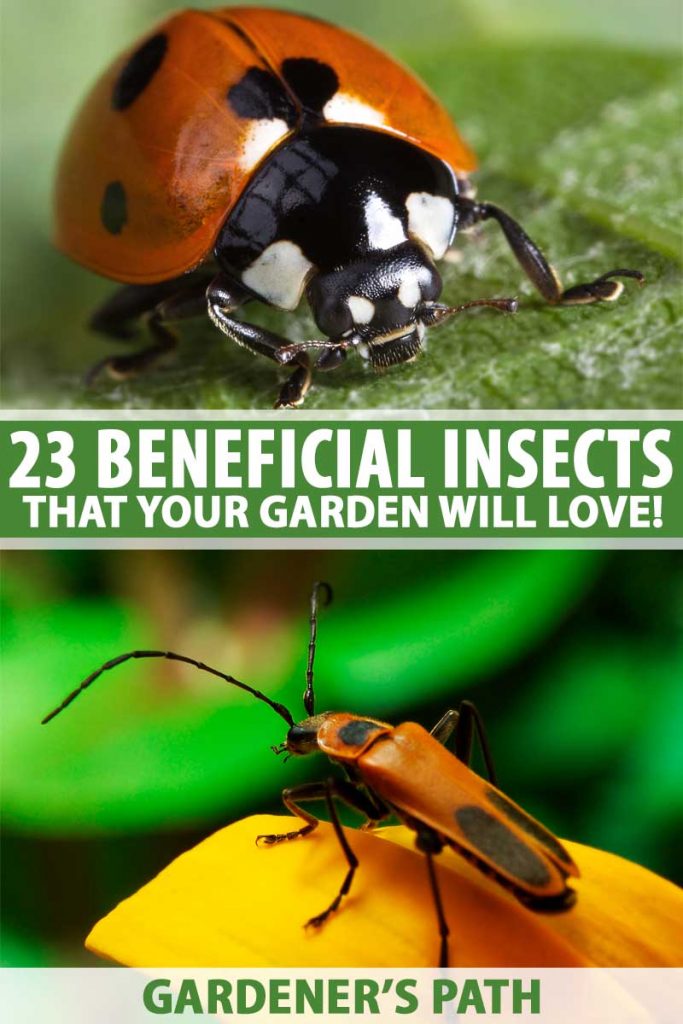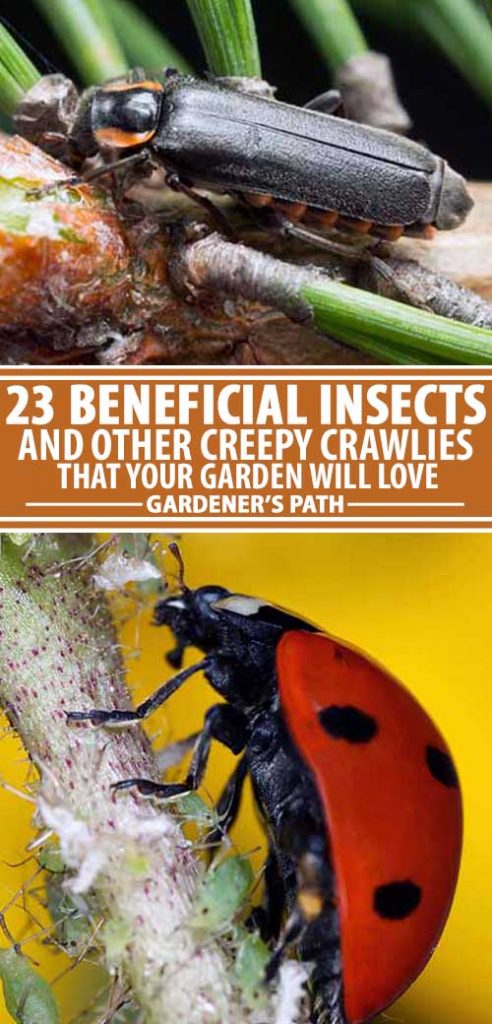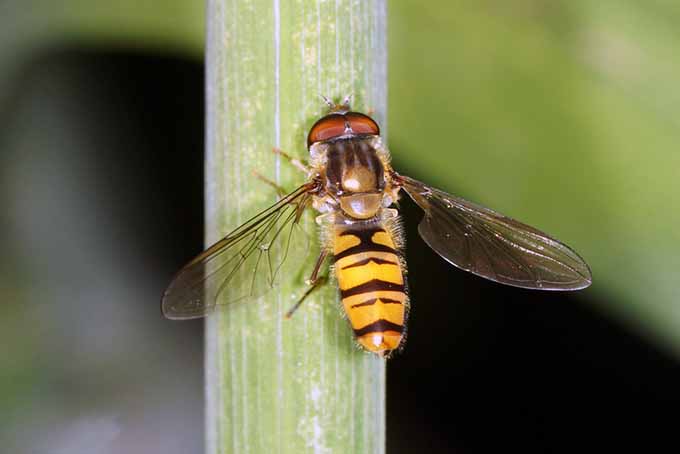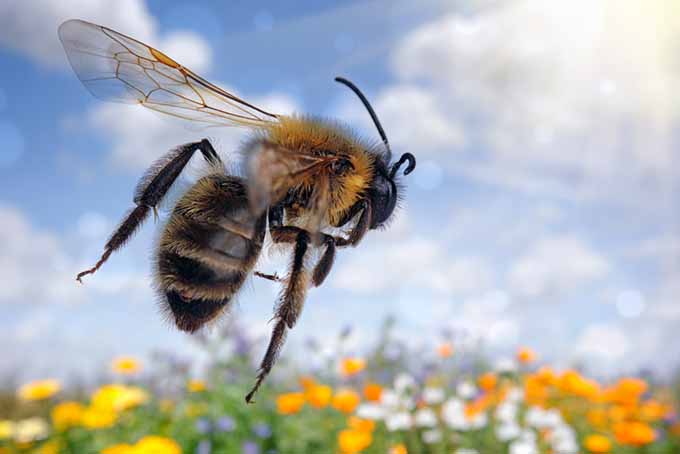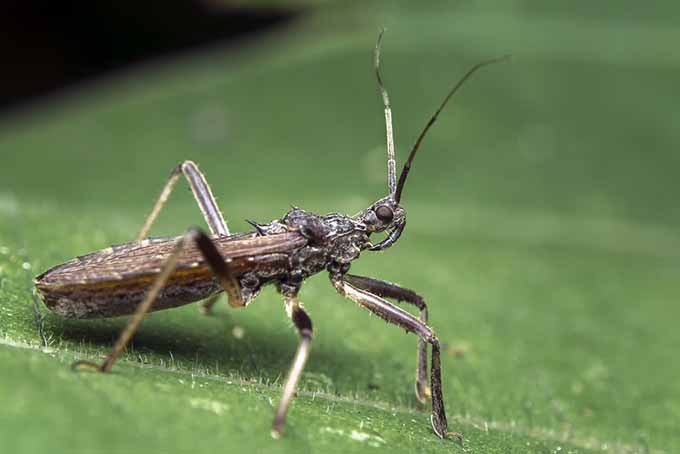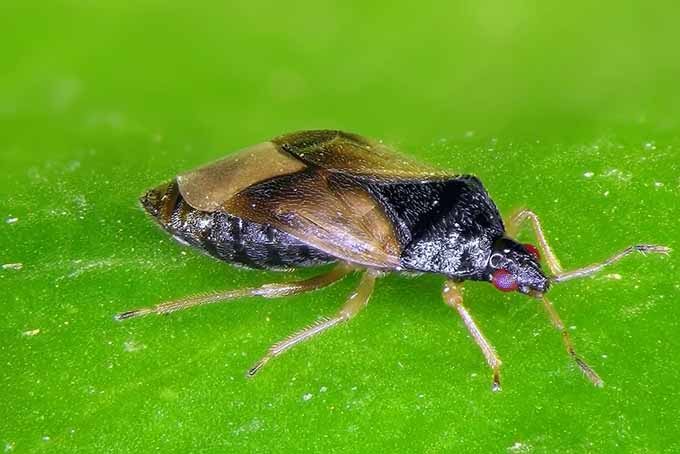[ad_1]
It’s late summer here, and my yard is alive with insects.
Wasps and bees dip in and out of daylily blossoms, butterflies flutter between the zinnias, and spiders have made an intricate network of webs among the marigolds.
I’m watching something interesting, as I sit and enjoy my surroundings. A wasp and a sparrow both want to drink from my birdbath, and they seem to be uncomfortably aware of each other, darting and returning several times.
Before we get too Norman Rockwell here, let me tell you, folks – this tranquil setting has an amazing story to tell.
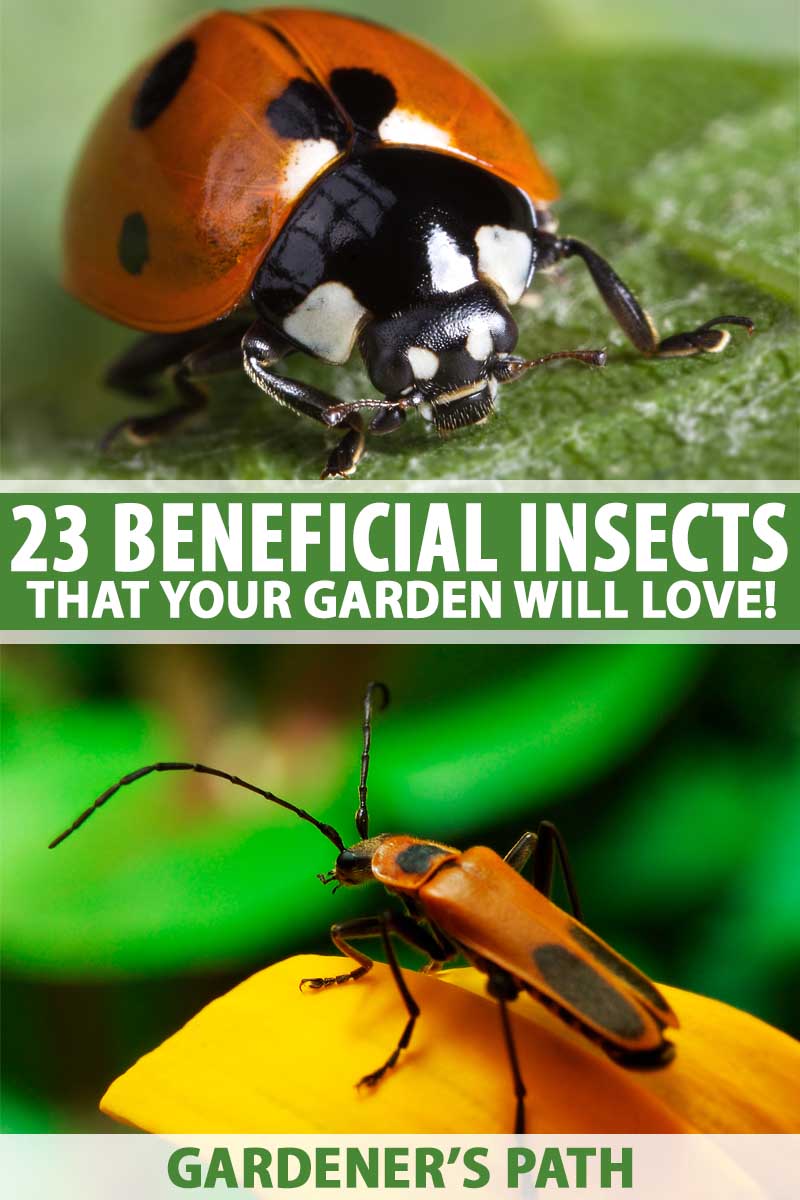

We link to vendors to help you find relevant products. If you buy from one of our links, we may earn a commission.
It’s one of predators lying in trenches waiting for unsuspecting prey, of parasites burrowing into the bodies of unwitting hosts, and of thousands of gossamer wings in flight, transporting the very essence of life.
Live and Learn
Over the years, I’ve learned much through trial and (more often than not) error.
My first experience with vegetable gardening was to grow a patch of tomatoes. Growing one crop is called monoculture, with “mono” meaning one.
I learned very quickly that it’s the surest way to attract unwanted pests that feed on tomatoes!
Why?


Because the insects that like to eat tomatoes, like the hornworm, set up housekeeping and live out their lives going from plant to plant with relative ease.
Then, the pupae stay in the soil all winter, to return as moths in spring who begin the cycle all over again.
So, how do we grow a thriving tomato patch without inviting hornworms?
One way is through crop rotation. By planting different vegetables in different locations on a rotating basis, you can foil the unwanted pests and have better yields.
But wait!
There’s a method that’s even better than monoculture crop rotation, and that’s achieved by avoiding it altogether with polyculture.
This method involves growing multiple plants that complement one another, to discourage infestation by bad bugs. You see, a bug doesn’t want to travel far to find food, and if he is surrounded by undesirable plants, he’ll probably move out.
And here’s the best part:
By interspersing vegetables, herbs, and flowers, you will attract beneficial insects to your yard that help to keep the bad bug population in check.
I know firsthand that it works! Let me tell you a little story…
I’m looking out our kitchen window, and I see pink and white phlox peeking over the fence. Beside them, black-eyed Susans are just beginning to open.
A short hop across the lawn is the vegetable patch, where tender lettuce is shaded by forsythia leaves, gladiolas mingle with tomatoes, bush beans with marigolds and zucchini, all beneath the watchful eye of Mexican sunflowers.
But we didn’t plan it this way. By interspersing vegetables, herbs, and flowers, you attract beneficial insects to your yard that help to keep the bad bug population in check.
In May I caught a doozy of a cold. And while I dozed feverishly on the couch, my dear husband planned – and executed – a garden.
He intended to plant vegetables, but he dug up my hollyhocks, nigella, and a random sampling of gladioli corms in the process.
The next day, after expertly preparing the soil, he sowed vegetable seeds in neat rows and marked each variety carefully. And then it rained.
It rained on 17 out of 30 of the days to follow in my corner of southeastern Pennsylvania, and mid-month, the a.m. temp dipped to 42°F. There’s much to be said for hardy native plants!
After almost seven inches of rain, shifting, settling, and the disappearance of the markers, we have the craziest, most mixed-up garden you ever saw, but it works.
The shade from the zucchini leaves inhibits weeds, and the scent from the marigolds is offensive to pests.
Here we are in late summer, and all I can say to my husband is, “Honey, pass the zucchini and grow it the same way next year!”
A Healthy Garden
Are the plants in your garden healthy? How can you tell?
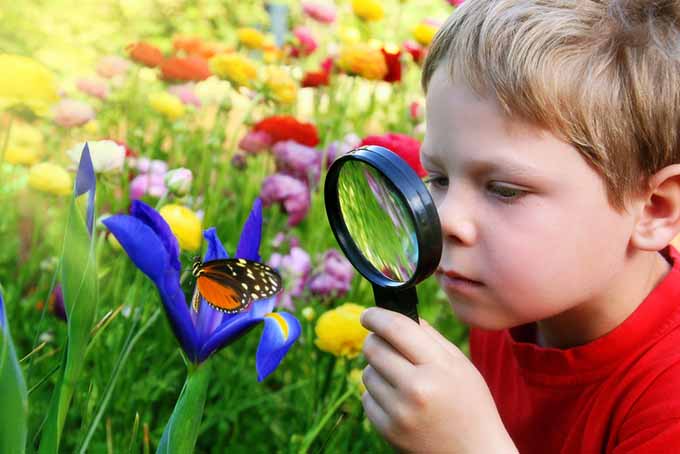

Most plants usually have a few blemishes, and that’s to be expected. But healthy plants look strong. Their stems or vines are sturdy, leaves are open toward the sun, and colors are vibrant.
You’ve heard the saying, “One bad apple…”
That’s right. It’s the weak and vulnerable members of your garden family who interest bad bugs the most. They’re easy targets for leaf-chewing, stem-boring pests that can wreak havoc if left unchecked.
Has this happened to you?
While it’s discouraging to lose plants, there’s usually a logical explanation when it happens.
For example, adverse weather conditions can undermine our best efforts, or we may buy a bad batch of seeds. When I’m faced with a garden challenge, I turn to one of my favorite resources, like Rodale’s Landscape Problem Solver: A Plant-By-Plant Guide by Jeff and Liz Ball, available on Amazon.
My own copy is dog-eared after years of use, particularly the sections on pest management.
Rodale’s Landscape Problem Solver: A Plant-By-Plant Guide
No garden is perfect. I’ve had zucchini rot before maturity during rainy spells – which we seem to have all too often…
I’ve had to destroy and dispose of entire plants to rid my garden of powdery mildew, a fungal disease that weakens plants and reduces vegetable yields.
Probably the result of high humidity rather than the rain, I’ll relocate my squash next year, and plant with plenty of air space around each.
Overall, I’ve learned to expect more successes than failures in the garden, and it’s because I’ve learned to do the following:
6 Keys to a Successful Garden
Now that we’ve covered the basics, let’s dig a bit deeper.
1. Start With Good Soil
Amend with organic compost and mulch, and fertilize as needed for proper aeration, drainage, nutrients, and pH balance.
2. Plant Hardy Natives
Select native seedlings and seeds including annual and perennial ornamentals, flowers, herbs, and vegetables.
Native plants are those that are found growing naturally in your area, rather than being imported from other climes. With reasonable care, you can expect them to thrive in your location.
Choose plants with sturdy stems and healthy foliage. Beware of root bound plants and those with wilting, discolored, or misshapen leaves.
3. Diversity Is Crucial
Companion planting; interspersing vegetables, herbs, and flowers; and insectary plant mixtures are effective ways to foil bad bugs, attract good bugs, and promote pollination.
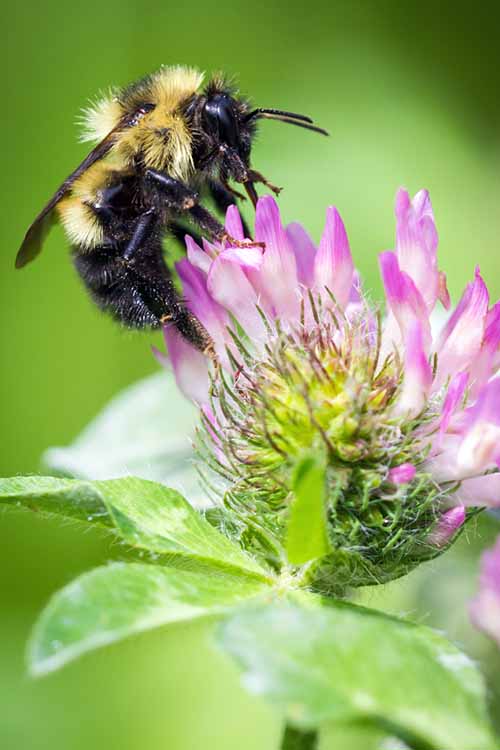

Insectary plants are simply varieties that are very attractive to insects. Some have many flowers, like phlox, and others have composite heads of many tiny blooms, like daisies or sunflowers.
4. Manage Weeds
Gardeners have different thoughts on managing weeds, but there is a consensus of opinion on the disposal of pulled weeds.
Let me explain:
My opinion is that anything growing in my garden that I didn’t put there is competing with my plants for nutrients in the soil, and for water.
That being said, I have some family members who are partial to two edible weeds in particular, purslane and chickweed, so I pull all of my weeds except for these types.
How do you handle the weeds that grow in your garden?
Some folks like to leave a patch or two for spiders to make webs in and for pollinators like butterflies to enjoy. But wait! We’re getting ahead of ourselves.
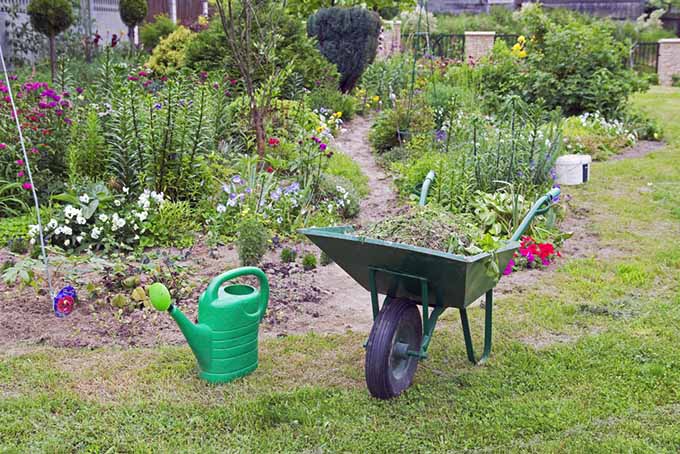

Whatever you choose to do with your weeds is fine with me, as long as you promise to do one simple thing:
If you pull weeds, don’t leave them lying in the garden to decompose.
This brings us to the final key…
5. Dispose of Plant Debris Promptly
If you are weeding or pruning, be sure to remove all debris from the garden.
Did you know that decaying plant material can become a host for destructive insects, as well as harmful bacteria?
Plant material that is not diseased or insect-infested, and weeds that have not gone to seed, may be placed on the compost heap. All others must go directly into the trash.
6. Provide a Water Source
Did you know that even bugs need water?
I’ve always had a birdbath or two in my yard, and as I’ve told you already, the bugs use it right along with the birds.
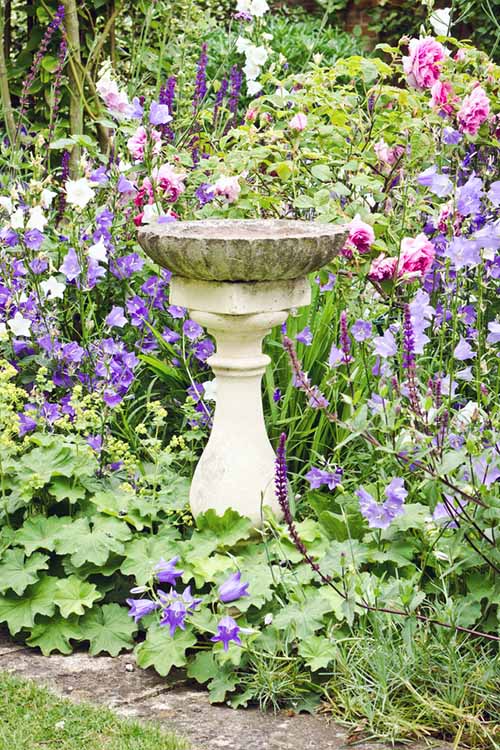

Some bugs get their liquid from nectar, others from the plants they eat. Bugs that prey on other insects need a water source, like dew or raindrops, to sustain them.
By providing water, particularly in dry spells, you can ensure the well-being of the insects in your yard.
With these keys, you’re on your way to having a healthy, productive, and beautiful garden.
You know, I’ve learned that whenever I take a shortcut, it comes back to bite me you know where, so don’t skip any of these steps!
And guess what else?
You’re not alone out there!
Healthy gardens teem with good bugs, or rather, insects.
Did you know that all bugs are insects, but all insects are not considered bugs?
It’s true. A “true bug” is one that is able use a body part called a proboscis to suck liquid.
Return to the Table of Contents
What Is an Insect Pest?
I grew up singing “inchworm, inchworm, measuring the marigolds,” reading The Cricket in Times Square, and hearing David Carradine call his kung fu protégé “Grasshopper.” Little did I know that these bugs would not be my friends in the gardens of my adult world!
Inchworms are greedy gluttons when it comes to delicious plant foliage. Young crickets chomp on the tender grass of lawns in spring, and grasshoppers can destroy a field of corn like a Biblical plague.
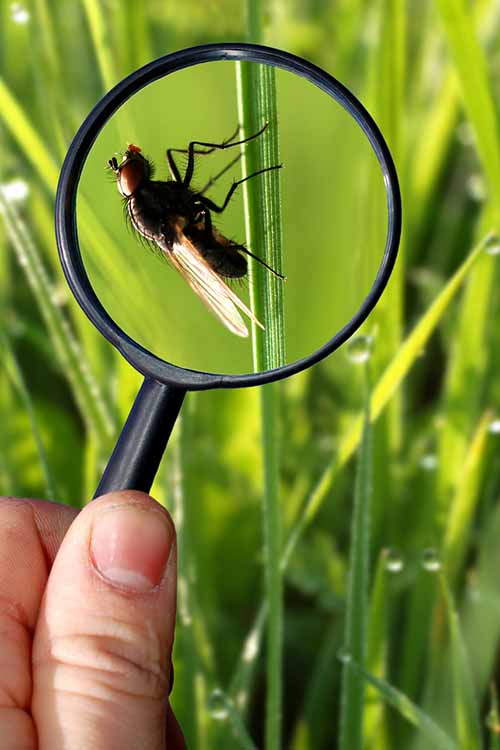

A pest is likely to chew or suck plant roots, stems, leaves, flowers, fruits, or vegetables, causing damage or destruction, or spreading disease.
Typical pests include mites, scale, thrips, earwigs, aphids, beetles, snails, and caterpillars.
Return to the Table of Contents
Bugs with Benefits
Good insects are a key biological control essential to a healthy garden.
Others include bats, birds, toads, beneficial microbes, and viruses, according to one of my favorite reference books, Jeff Ball’s 60-Minute Garden.
Ball says that while there are many pests in every yard, only five to ten varieties are likely to harm a home vegetable garden. And of those, only three to five might do serious damage.


The trick to attracting desirable bugs, or beneficials, is to provide habitats that interest them and make them want to stay. According to the Permaculture Research Institute, you can begin by adding plants that attract good bugs to your gardens.
With their favorite foods, water, and a place to live, these guys will earn their keep by preying on nuisance insects, pollinating, and generally helping to keep your garden healthy.
Predators, Parasites, and Pollinators
Did you know that insects and spiders are fascinating members of the arthropod family of invertebrate animals? They’re not all bad! Plenty of good bugs are out there among the pests, and they are called “beneficials” with good reason.
Good bugs can be predators. This means they seek out their prey and use it for food for themselves and their young.
Ambush predators, like various types of spiders, lie in wait for their victims.
Pursuit predators, like some flies, attack with speed and precision.
They can also be parasites, like several varieties of wasps. In this case, pests become the host for good insects to lay their eggs on, so they can mature, feed, and consume the remainder of the host bug.
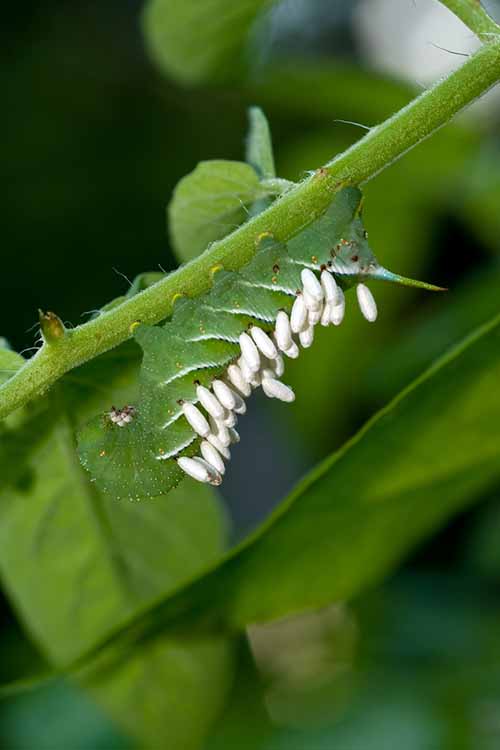

Yuck, right?
Predators and parasites can also be pollinators. Usually when we think of them, we think of bees. But any critter that brushes up against pollen and carries it from blossom to blossom is helping to fertilize plants.
We’ve developed a comprehensive list of flowering plants that attract pollinators.
Did you know that without these hard workers, most plants would be unable to produce seeds and would eventually die out?
According to the USDA Forest Service, pollinators are responsible for helping 80 percent of the world’s flowering plants reproduce.
Ants, bees, beetles, butterflies, flies, moths, and wasps are the insects that share in this responsibility. Bats, birds, other types of animals, wind, and water do the rest.
There’s a bevy of hardworking bugs at the core of a healthy garden, and it’s time you met some of them – face to face.
Return to the Table of Contents
Wanted: Hardworking Bugs
A picture really is worth a thousand words, so let’s get right to it.
The following photos and descriptions introduce a number of common beneficial insects, some of their favorite foods, and how to encourage them to make your yard their home.
Soldier Beetle
Scientific name: Cantharidae
The predatory soldier beetle may be found atop a brightly colored blossom, lying in wait for soft-bodied prey.


He pollinates as he ambushes a passing aphid or the like, pulling double-duty in your garden.
A soldier beetle’s young may feed on the larvae of moths and grasshoppers.
Return to the Table of Contents
Big-Eyed Bug
Scientific name: Geocoris
This aggressive good-guy is always on the prowl, pursuing unsuspecting victims like juicy caterpillars and aphids.
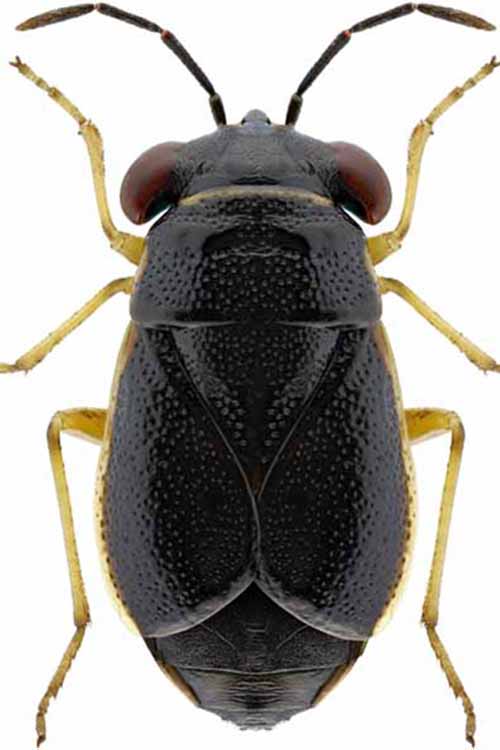

Always on the job, you may see him hurry past, in search of his next tasty morsel.
A true bug, the big-eyed bug makes the most of his proboscis, drinking the body fluids of his prey, like juice through a straw, down to the very last drop.
Return to the Table of Contents
Hover Fly
Scientific name: Syrphidae
Also called syrphid flies, these little guys can often be spotted hovering like small helicopters above their favorite flowers.
They feed on sweet nectar, pollinating as they go.
Female hover flies lay their eggs very strategically among colonies of aphids, ensuring an abundant food supply for their young.
Return to the Table of Contents
Ladybird Beetle
Scientific name: Coccinellidae
Known affectionately as the “ladybug,” this little predator is a powerhouse when it comes to working hard in the garden.
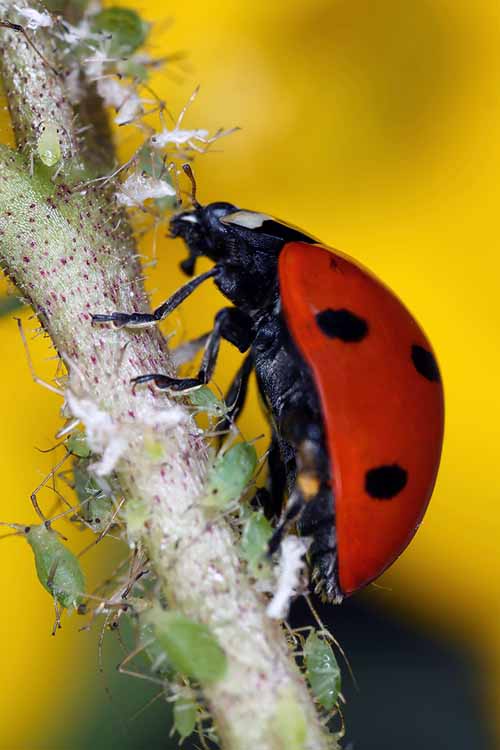

Not a true bug, it must secrete saliva to digest its food, and if prey is unavailable, will feed on pollen.
In the larval stage, and as an adult, a ladybug consumes vast quantities of aphids. When aphids attack a plant, they can literally suck the life out of it, so inviting the ladies into your yard is a good idea.
Return to the Table of Contents
Rough Stink Bug
Scientific name: Pentatomidae
Stink bugs get their name from a foul-smelling odor they give off from their abdominal glands.
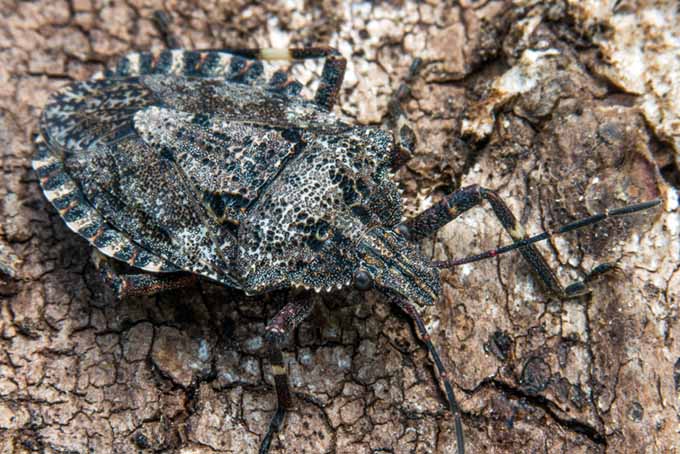

They are somewhat flat and look a bit like army tanks. In my area, all you have to do is mention them, and people roll their eyes. But wait! This isn’t the pest you’re thinking of.
Not to be confused with the brown marmorated pests that have inundated the US from Asian sources, rough stink bugs prey upon soft-bodied aphids, as well as caterpillar and beetle larvae, and are considered to be friends of the gardener.
Return to the Table of Contents
Lacewing
Scientific name: Chrysopidae
The delicate lacewing is actually a calculating predator.
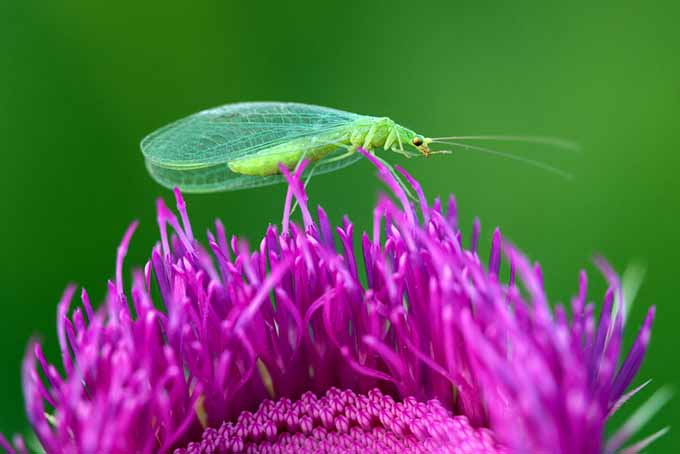

A nocturnal bug, it has a voracious appetite for aphids and other slow-moving pests, which it hunts under the cover of darkness.
Females lay their eggs among aphids so young lacewings will have an abundant food supply.
Return to the Table of Contents
Dragonfly and Damsel Fly
Scientific names: Anisoptera & Zygoptera
These beneficials make their homes near water, where they lay eggs.
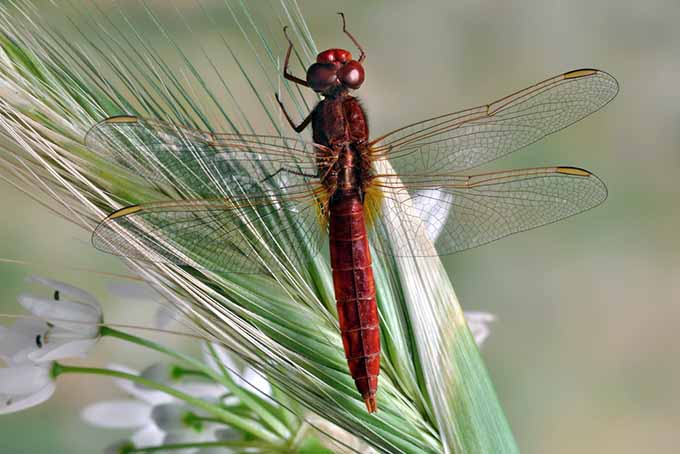

The eggs hatch into aquatic larvae that feast on the larvae of other flying bugs.
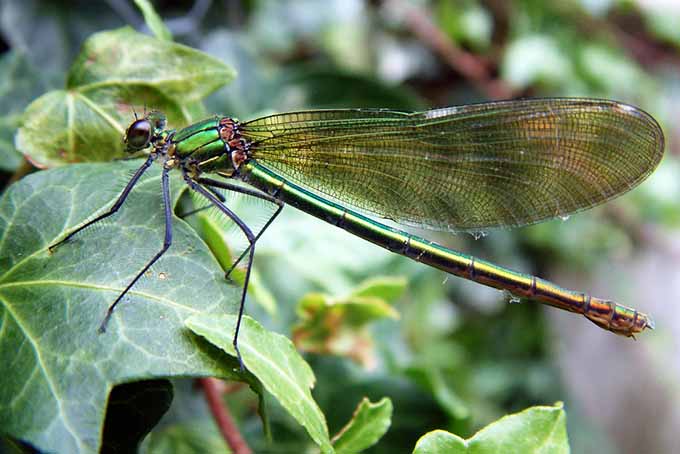

In the mature stage, these winged predators feed upon flying pests, perching patiently and attacking swiftly.
Dragonflies and damselflies play a key role in keeping the mosquito population in check.
Return to the Table of Contents
Braconid Wasp
Scientific name: Braconidae
There are many types of wasps. While they do pollinate, they don’t have the fuzzy legs of bees, and so are not as efficient at this job.
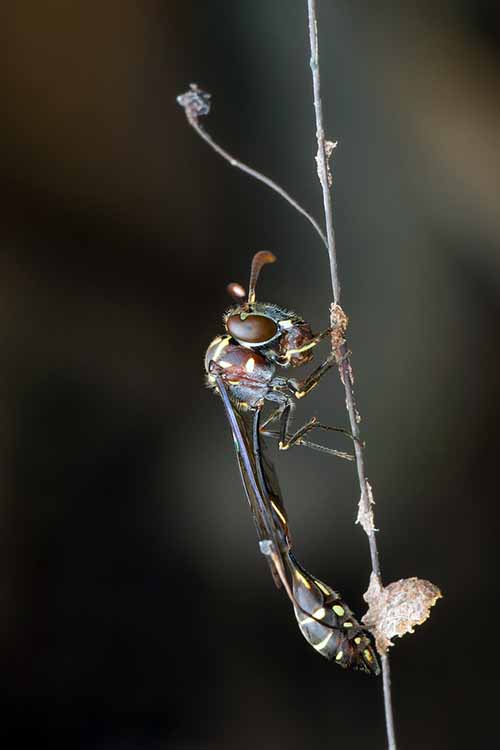

However, there are several miniature varieties that are quite beneficial. One is the braconid wasp, friend to the tomato gardener. This mini-wasp is a beneficial that parasitizes the tomato hornworm, a destructive pest.
By laying its eggs in a host like the hornworm, this wasp ensures a lifecycle of nutrition, much like the monarch and the milkweed. The braconid will entirely consume its host as it progresses through the pupa, cocoon, and adult phases of its life.
If you see a hornworm covered in eggs or pupae, leave it alone. This nursery is producing an army of beneficials!
Return to the Table of Contents
Native Bee
Scientific name: Anthophila
There are many bee species apart from the European honeybee, and the native bumblebee (scientific name Bombus) in particular is a wonderful garden friend, as it pollinates a wide variety of plants.
Not known for being aggressive, it will defend its hive, and is able to sting.
Bumblebees cannot see the color red, will pollinate flowers of all colors, and prefer those with large, single blossoms.
Return to the Table of Contents
Butterfly
Scientific name: Rhopalocera
The butterfly is another welcome addition to a garden. This pollinator starts out as an egg that hatches into a caterpillar. The caterpillar, in turn, becomes a pupa, a chrysalis, and finally emerges as a winged butterfly.
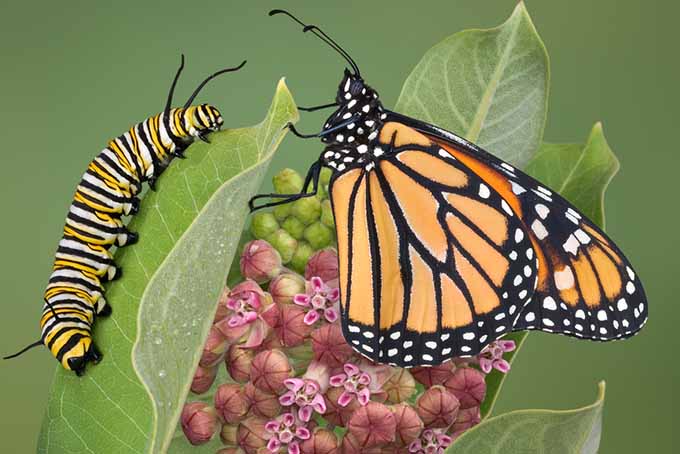

In the case of the monarch variety (Danaus plexippus), the milkweed plant plays host to the species from cradle to grave, providing food and shelter through all stages of life.
Tip: Some juicy fruit slices placed on a plate in the garden are a great invitation to dine in your yard.
Now you have some idea of who the good guys are, I’m sure you’ll begin to notice some of them as they go about their business. They really are an interesting bunch!
Are you wondering if there’s a quick way to load your yard up with good bugs?
That’s something we definitely need to discuss.
Return to the Table of Contents
Commercially Available Beneficials
There are good bugs available for purchase from reputable insectaries.
Introducing ladybugs, braconid wasps, or lacewings into your gardening environment will give your beneficial population an instant boost. Imagine the impact of 1,500 ladybird beetles on an infestation of aphids!
But when the feeding frenzy comes to an end, what’s a hungry ladybug to do?
This is where you come in. Before your little friends arrive, plant some of their favorites in your garden. This way, when they get the pest population under control and go looking for pollen to sustain them, there will be a ready supply.
This reminds me of another critter you might be wondering about, that’s also available commercially – the worm.
A Word on Worms
By definition, earthworms (scientific name Lumbricus terrestri) are animals, but not insects.
However, it may be argued that these subterranean marvels are a garden’s most beneficial inhabitants.
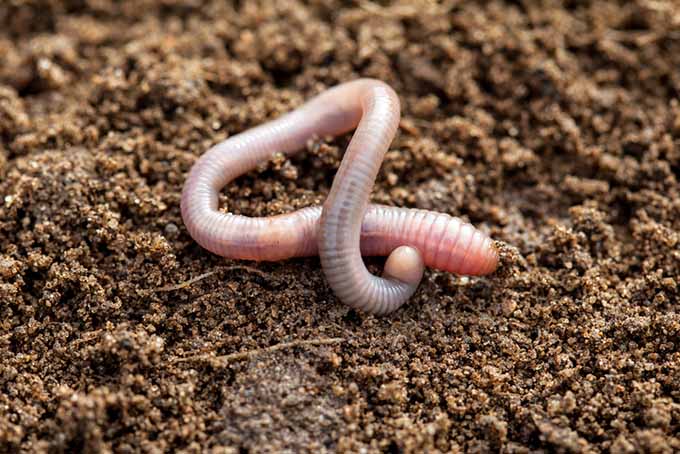

Often purchased for the compost bin, worms break down organic material, excrete nutrient-rich droppings, and increase air and water permeability as they move about. Soil that is alive with worms is rich soil, indeed!
So, did you know that spiders are not insects either?
Said the Spider to the Fly
While they do creep and crawl, spiders have no antennae, never fly, and walk on eight legs instead of six. Their bodies have two parts instead of three.
Spiders are members of a unique group of invertebrates called “arachnids,” and are reputed to be the deceptive weavers of tangled webs.
Return to the Table of Contents
We’ll learn more about them in a moment, but first, another “bug” that’s not a bug:
Pill Bug
Do you remember playing in the dirt as a kid, and finding a shy little gray bug that rolled up into a ball at the slightest touch?
These are “roly polies” or pill bugs (scientific name Armadillidiidae).
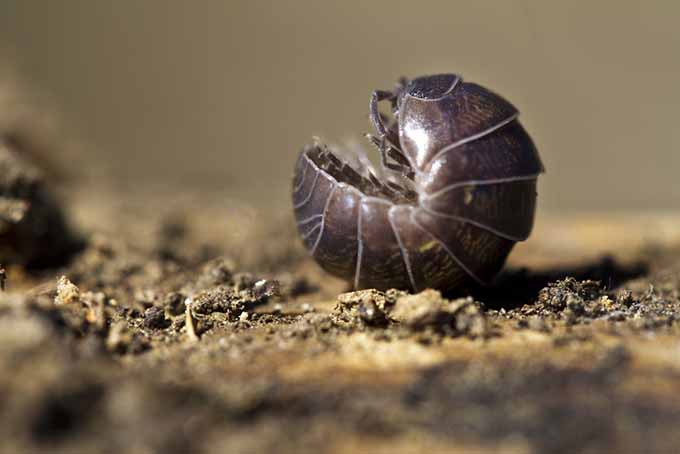

These unique creatures are a type of wood louse, and technically speaking, they’re arthropods. However, instead of being insects, they fall into the biological group called isopods, a type of crustacean. That makes them cousins to the shrimp and crab!
Looking like tiny armored vehicles, these amazing little creatures breathe through gills, and love to eat debris in the garden.
They prefer damp, woody areas loaded with rotting leaves and branches. So they’re right at home in a compost heap or wood pile.
Return to the Table of Contents
Friend or Foe?
Bugs are tricky. There are many varieties, and it can be hard to tell one from another. Pill bugs may do a good job in your compost pile, but if they infest your basement, that’s another story.


A number of beneficial varieties winter over and appear again the next growing season. This means that once the weather turns cold, bugs like the ladybird beetle seek warmth.
One fall I found some huddled in the casement of a sunny bedroom window. Fortunately I caught them as the first ones ventured inside.
What it comes down to is this:
A bug may be helpful to one gardener, and a nuisance to another.
With that in mind, let’s look at a number of insects that are considered by most gardeners and professional growers to be beneficials.
Keep in mind, these also have a dark side.
Many not only eat pests, but also like to chow down on certain types of beneficials as well, and sometimes even their own kind!
Return to the Table of Contents
Robber Fly
Scientific name: Asilidae
An aggressive hunter, the robber fly consumes victims like grasshoppers and grubs with gusto.
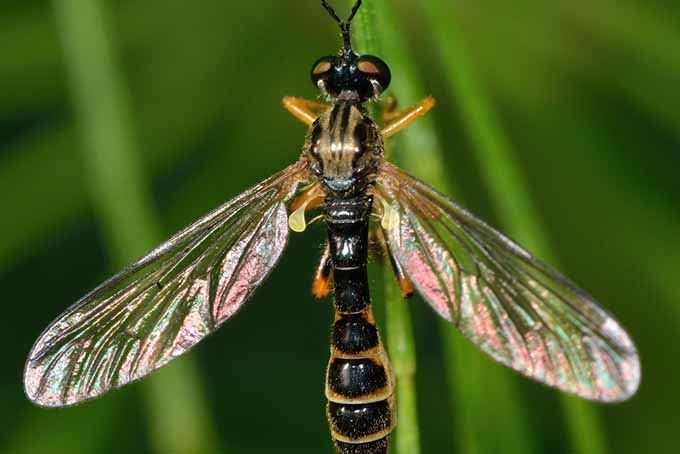

He’s an ambush predator who lies in wait for his prey, ready to spring upon it – even in mid-flight!
However, this species is of dubious benefit, as it’s not opposed to dining on the occasional bee or butterfly, in addition to its favorite garden pests.
Return to the Table of Contents
Assassin Bug
Scientific name: Reduviidae
Also known as the “wheel bug,” this predator has a vicious nature, attacking a variety of pests with a deadly toxin.
However, if his favorite foods aren’t available, he may pursue beneficials, including his own kind.
The bite of the assassin bug is quite painful to humans, so don’t pick him up. He won’t bother you if you leave him alone to do his job.
Return to the Table of Contents
Pirate Bug
Scientific name: Anthocoridae
This tiny predator feeds on its favorite pests when they’re available, but sips nectar and plant juices when they’re not.
It has an extremely short life cycle, so several generations can be produced in one growing season.
Pirate bugs do bite humans, causing a reaction ranging from none at all to that of a mosquito bite.
Return to the Table of Contents
Ground Beetle
Scientific name: Carabidae
This creeping predator spends most of the day resting, saving his strength for the night.
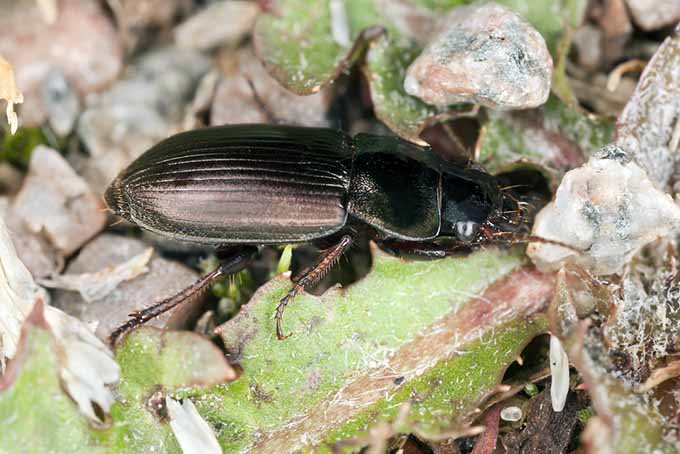

If you want to look at a ground beetle up close, just turn over a rock or flagstone and one is sure to scurry out.
Once darkness falls, the ground beetle ventures out in search of tender prey like maggots and cutworms. Foraging in the soil and among the roots and stems of plants, he ferrets out his favorite foods.
Return to the Table of Contents
Mantis
Scientific name: Mantodea
It’s always a treat to find one of these interesting creatures in the yard, and even better to watch a nest of several hundred hatch.
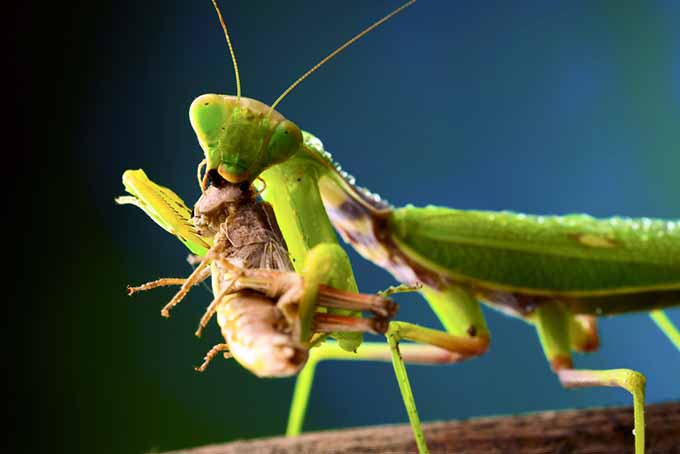

Contrary to popular belief, mantises are not endangered species, nor are they protected by law.
And, while mantises do eat copious quantities of insects, they make no distinction between beneficials, pests, or other mantises when hunger strikes!
Return to the Table of Contents
Tachinid Fly
Scientific name: Tachinidae
Tiny as they are, these good bugs are stalwart members of a healthy garden’s pest patrol.
This miniature parasite uses the body of its prey as a place for laying eggs. When its ravenous young larvae hatch out, there’s an ample supply of food in the host caterpillar or similar victim.
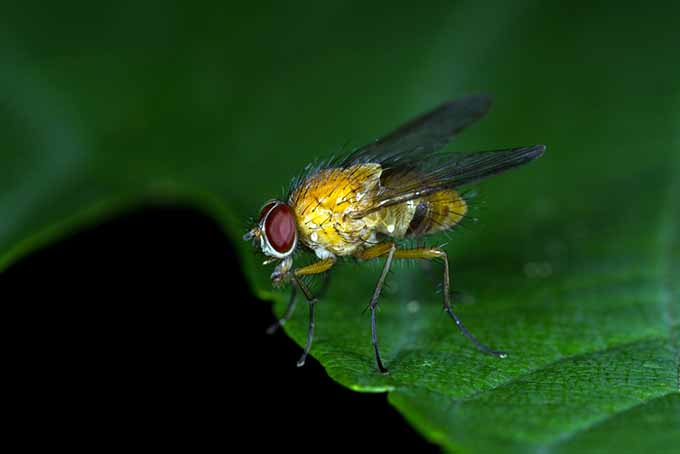

With these guys on the job, you won’t have to worry about cutworms, the dreaded moth caterpillars that feed on plants below ground, effectively “cutting” them down.
However, with a taste for the caterpillar of the monarch butterfly, encouraging tachinids may pose a dilemma!
Return to the Table of Contents
Carpenter Bee
Scientific name: Xylocopa
Another active pollinator, the carpenter bee gets his name from the way in which he burrows into wood to make a nest.
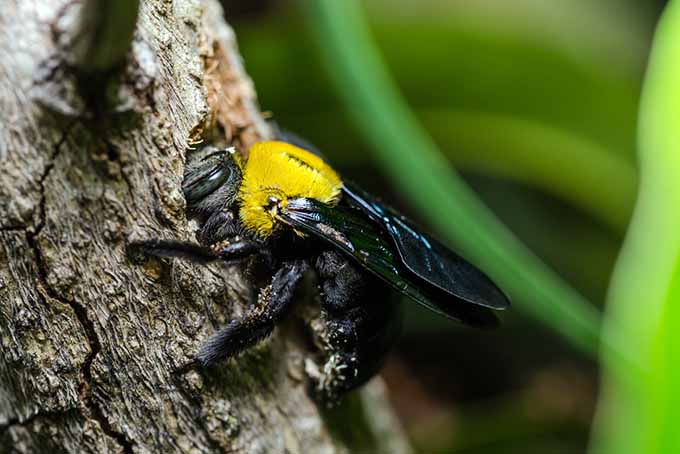

All this bee needs to behave himself is a nice woodpile or old stump to call home.
Otherwise, he may decide to set up housekeeping in the wood of your deck or play set.
If you do have problems with these pollinators getting into your wood structures, take a look at our handy guide full of tips to get rid of them.
Return to the Table of Contents
Cabbage White Butterfly
Scientific name: Pieris rapae
As an adult, this pretty butterfly is a gardener’s friend, flitting about, sipping nectar, and pollinating like crazy.
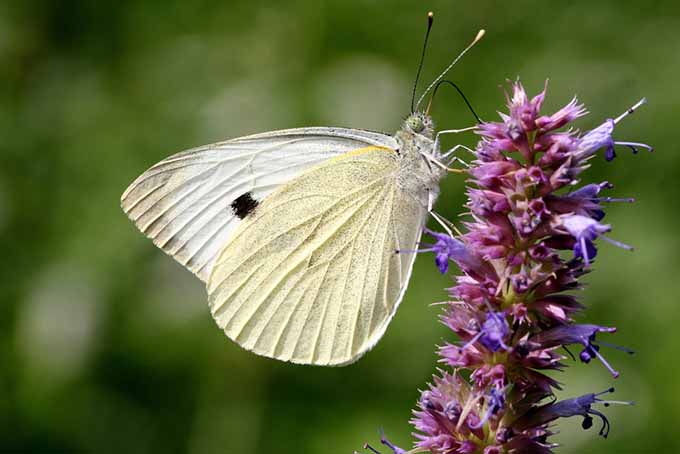

Drawn to mint, red clover, and asters, these common butterflies are frequent visitors to my flowers.
However, as youngsters, they are very hungry caterpillars who eagerly feed upon tender cabbages and radishes. I haven’t grown any of these recently, so they must have fed on the veggies in someone else’s yard!
Read more about the cabbage white butterfly and its caterpillars here.
Return to the Table of Contents
Ant
Scientific name: Formicidae
In my area in early spring, ants play an important role in ensuring that my lawn will be a healthy one.
Each year, the neighbors put their heads together over specimens of winged ants that swarm during mating season. When we’re all convinced that, once again, they’re not termites, it’s back to business as usual.


According to the experts at the Penn State Cooperative Extension, my local go-to professional resource, ants like these often prey upon mealy bugs and aphids, a good that may outweigh tolerating a brief swarm and sidestepping a few hills in your lush barefoot lawn.
However, while ants do travel through flowers, they take more than they give, sipping nectar, and contributing little to pollination.
Return to the Table of Contents
Spider
Scientific name: Araneae
Many varieties of spiders, like the black and yellow agriope, spin elaborate orb webs up to two feet wide, and lie in wait for unsuspecting garden invaders to become entangled in the sticky gossamer threads. Then, they rush out to wrap their prey for a future meal.
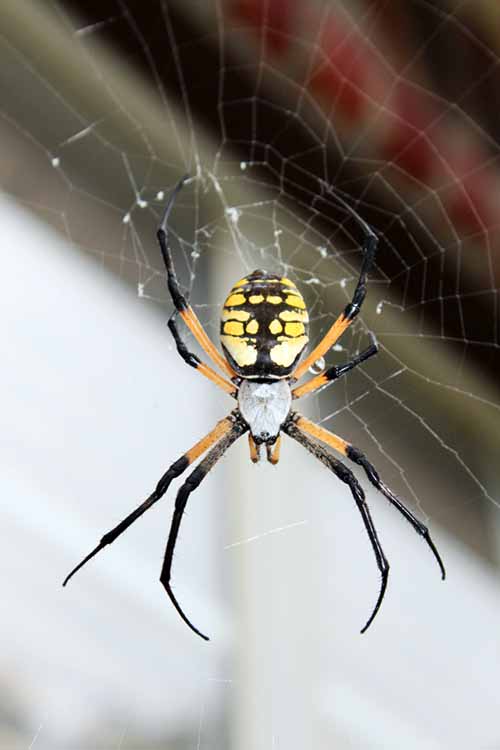

Others rest in holes in the ground beneath constructed trip wires, ready to pounce upon their quarry with lightning speed.
With an appetite for pests such as beetles, flies, and wasps, spiders are considered friends of the gardener. However, no distinction is made between good or bad when it comes to what’s on a spider’s menu.
Return to the Table of Contents
Welcome Your Friends in Style
Once you’ve decided who your friends are, do your best to create habitats that will make them want to stay.
NiteangeL Wooden Insect House, available on Amazon
In addition to good gardening practices, you might consider providing them with the luxury accommodations of a move-in ready insect hotel.
Don’t Swat That Fly!
Knowing who your friends are is of great use in the garden.
A dragonfly may look big and scary, but that’s no reason to squash the daylights out of him. He’s your ally, not your enemy!
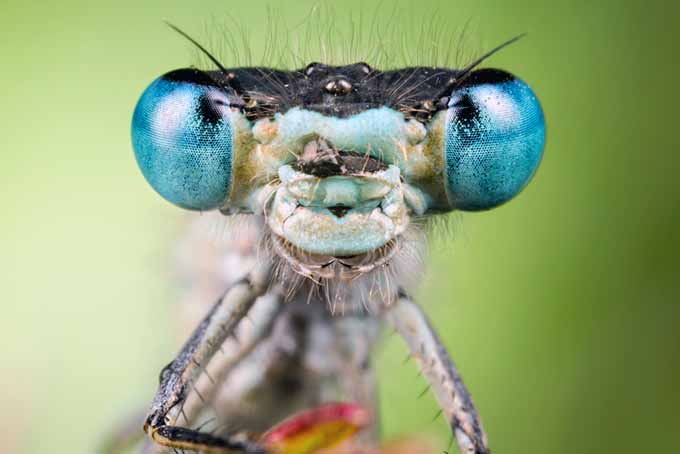

Remember – beneficial insects are on the job when you keep the six keys to a successful garden in mind:
- Good soil
- Hardy, native plants
- Plant diversity
- Weed management
- Proper plant disposal
- Water source
[ad_2]
Source link

